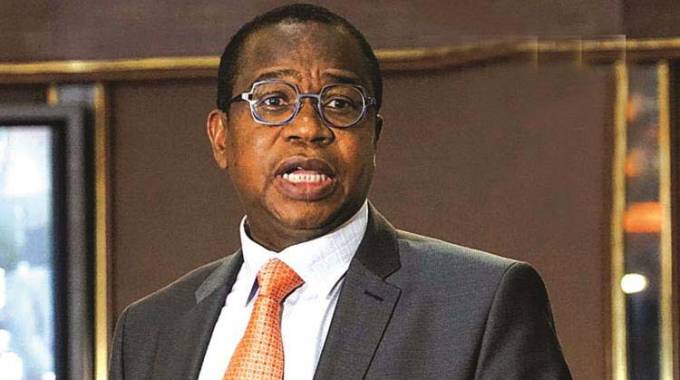
The Sunday Mail

Golden Sibanda
Senior Business Reporter
The exchange rate and its implications on inflation or price hikes is probably the most closely monitored economic factor in Zimbabwe right now, and that is for a very good reason.
If one went to sleep with wads of the Zimbabwe dollar or its electronic equivalent, they could just wake up the next morning with a significant portion of the value they held heavily eroded. Fact.
Evidently, the Zimbabwe dollar exchange rate has dropped from 2,5 to the US dollar after the domestic currency was floated on the interbank market a year ago to about 17,7 against the global currency as of last week.
Consequently, inflation vaulted from 5,39 percent in September 2018, when the currency reforms started, to 175,6 percent at the last official count and publication of the annual rate in June last year.
But Reserve Bank of Zimbabwe (RBZ) Governor Dr John Mangudya said the bank was working on measures to further entrench stability of the Zimbabwe dollar, through the 2020 Monetary Policy Statement to be announced soon.
The cocktail of measures will entail stricter control of money supply growth, inflation targeting and enhancing currency stability and transparency on the interbank by using an electronic trading platform, Reuters Trading System.
Admittedly, the governor said the economy had suffered from confidence crisis from the toxic politics of yesteryear not to mention a decade of economic instability Zimbabwe that reached its peak in 2008.
Finance and Economic Development Minister Mthuli Ncube also contends the slide in value of the Zimbabwe dollar was expected, as it’s human nature to resist change, amid confidence crisis due to the bad memories of 2008.
He said, as indicated by President Mnangagwa, one of Treasury and monetary authorities’ main focus areas this year would be to maintain exchange rate stability to preserve the intrinsic value of the local currency.
“We know practically that it’s taking time for Zimbabweans to adjust and we know why. It is difficult to have that silver bullet where everyone complies on day one. We recognise that; we are in a transition; we will get there,” he says.
While people are justifiably spooked by news of exchange rate instability, given its impact on purchasing power and savings, it is important to also note the Zimbabwe dollar remains one of the relatively strong currencies globally.
The Zimbabwe dollar is, for instance, still stronger than the Indian rupee, a currency for the world’s seventh largest (US$2,7 trillion) economy. A single US dollar is equivalent to about 74,1 Indian rupees at the going rate.
In 2019, the world’s weakest currency was the Iranian rial, which exchanged for 42 105 against the US dollar while the Vietnamese dong followed at 23 208 to the greenback. The Indonesian rupiah traded at 14 114 to the US dollar.
Closer home in Africa, the Sierra Leonean leone exchanged at 9 500 to the dollar, and the US dollar bought 9 230 Guinean francs while 3 678 Ugandan shillings was only enough to add an extra dollar into your pocket.
So, as far as the value of the local currency is concerned, Zimbabwe is not doing as badly as many think, save to say it is the goose bumps one develops at the potential loss of value relative to their income, whenever the rate slides.
As the exchange rate of the Zimbabwe dollar to the US dollar slid, it has precipitated waves of price increases that have eroded disposable incomes most people whose earnings are denominated in local currency.
Even closer home, it’s safe to say the Zimbabwean dollar is still holding its own against the South African rand, the currency for Africa’s biggest economy.
Some might cite restrictions on its freedom to respond to demand, but the world over it’s common practice to put parameters that guide markets and currencies to cushion economies from potential hazards.
And Dr Mangudya said last week that the forthcoming MPS will focus on the cocktail of measures to anchor the Zimbabwe dollar’s stability. “That is what the next monetary policy will focus on to ensure stability,” he said.
He made the comments as many people continue to prefer to transact in the US dollar, with prices significantly cheaper when using the greenback compared to transactions done in local currency.
This has prompted debate on whether Zimbabwe is succeeding in its quest to de-dollarise, after gazetting Statutory. “It’s a process, you don’t just cut and everything falls into place, it does not happen like that,” Dr Mangudya said.
Minister Mthuli said Government was determined to enforce the domestic mono-currency and would slap culprits, corporate and individuals, who violate the policy thrust and legal requirements with stiff penalties.
But it is worth noting that Zimbabwe has struggled to boost productivity on farms and industries to reduce dependency on imports, which require a lot of foreign currency and increase the demand for US dollars.
Essentially, it is not very far from the truth to assert that Zimbabwe is suffering from a production bpttleneck, which has been com[pounded by other factors that include low investment, low confidence, impact of sanctions and lack of external lines of credit.



